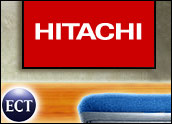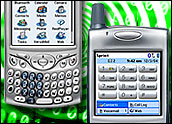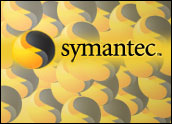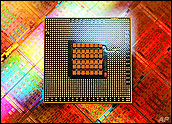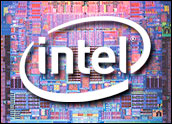
Technology similar to that which propels tiny droplets in inkjet printing might soon be used to painlessly inject medicine into the skin with a patch.
Inkjet pioneer HP has created the drug delivery patches and is allowing Ireland-based medical device developer Crospon to sell them. The patches are being described by the companies as the world’s first skin patch for “smart” drug delivery.
The devices have the ability to deliver one or more drugs using tiny processors and “microneedles,” HP and Crospon said.
Getting Under the Skin
The medicine will be delivered “intradermally,” meaning just below the skin surface, the companies said. The technology allows precise control of dose timing, access to dosage history, patient activation methods “and inherent safety protocols for preventing adverse drug interactions,” they noted.
The inkjet technology-based patches differ significantly from other medicine-dosing patches now in use, primarily for nicotine infusion in those trying to quit smoking.
Those patches, known as “transdermal” patches, rely on the skin absorbing the drug. HP and Crospon said the skin’s natural barrier action limits the effectiveness of the transdermal method.
High-Tech Precision
The use of microneedles “that barely penetrate the skin,” makes the new intradermal systems virtually painless, a technology that the developers said “radically reduces discomfort compared to traditional hypodermic needles.”
Compared with regular needles, the microneedle systems also allow the delivery of a wider variety of substances and allow the medication to enter the patient’s bloodstream more quickly, said HP and Crospon.
Also, the precision of the new patches gives doctors the potential of using lower and more precise doses, they said. HP developed the technology at HP Labs, its main research facility.
Repurposing Yesterday’s Breakthroughs
HP said it is licensing its intellectual property to Crospon in return for royalty payments. Crospon recently secured about $3.2 million in seed financing. It will make the new patches as well as conduct all the marketing, sales and support.
HP invented the drug delivery technology in an effort to “repurpose its inkjet technology for use in new markets,” it said. The development of the patches “breathes new life” into the aging inkjet technology and allows HP to capitalize on “the booming healthcare and life sciences market,” said Joe Beyers, HP’s vice president of intellectual property licensing.
HP encourages companies to apply its intellectual property in innovative ways, he added.
Recouping R&D Spending
The deal with Crospon had its roots in HP’s involvement with Enterprise Ireland, an agency of the Irish government that supports Irish businesses.
The deal is risk-free for HP, even if the patches do not take the medical world by storm, said Jack Gold, founder and principal analyst at J. Gold Associates.
“This is certainly a no-lose situation for HP,” Gold told TechNewsWorld. “And if it goes somewhere, they get some licensing revenue. It’s not clear to me yet how much they are going to get out of this, but it’s non-threatening to HP’s business model, and I think it certainly behooves HP to explore any avenue it can to use its patent portfolio — which is pretty extensive — to increase its business somehow.”


